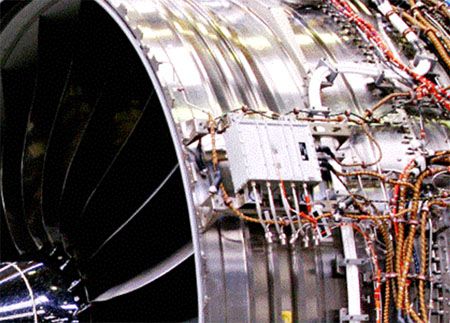Rolls Royce Shifts In Higher Gear With Big Data

Rolls Royce, the engine manufacturer and not the car manufacture, takes big data to a higher gear with their Rolls-Royce Engine Health Monitoring Unit. All engines of Rolls Royce, be it for aircrafts, helicopters or ships, are equipped with sensors that collect data from different components, systems or sub-systems within the engines. This information is analysed by algorithms that are programmed into the collection system. The monitoring happens in real-time, be it at 37.000 feet or in the middle of the ocean, and the data is sent to the control room in Derby.

All minor details like vibration, pressure, temperature, speed etc. are sent via satellite to a computer that analyses the data. In total there are around 100 sensors embedded in the engines. Whenever a small error is noticed, it can be corrected then and there, even when flying at over 1.000 km/h. All data is received by around 25-30 engineers who and another 150 engineers, who work in shifts round the clock, analyse all the data pouring in. On an annual basis this adds up to over half a billion data reports.
In case there is something more serious going one, the control room in Derby is noticed and a ground service team from Rolls Royce will be present when the plane lands, anywhere in the world. In order to do this they have over 200 engineers ready to make sure spare parts arrive on time and another 160 armed forces across the world ready to fix if necessary any of the planes belonging to one of the 500 airline companies.
All data collected gives the company not only early warning on fails diagnosis, but it also helps its airline customers to schedule maintenance more cost and time efficiently. This minimizes disruption and delays for customers.
For Rolls Royce this is nothing new. They were already involved in big data before big data became cool. Back in 2006 they were already monitoring over 3.000 engines in real-time as well as collecting and analysing that data after being streamed via satellite during flight. However, the improved algorithms have resulted in increased capability to prevent technical issues before they occur.
Sometimes, the ground control crew is still needed to perform a manual check when the plane is on the ground. Such checks are performed with a fibre-optic instrument called a borescope. It allows an engineer to look inside the engine and look for damages, occurred by a bird-strike for example. However, it is a difficult job and requires highly qualified personnel that are not always available taking into account the 14.000 engines that are flown by 500 airlines on 4000 aircrafts worldwide.
Rolls Royce has found a solution for this problem however as they are developing a robot that can be placed in the engine by a relatively unskilled engineer. This snake robot enters the engine and sends back images to an expert who can control it remotely. An engineer can then fix any problem. This robot is developed with help of a € 4 million European research subsidy and the project is called Miror and should be operationally in 2014. But there is more, as they are also developing a camera to be placed inside the engine at its core. There it should be able to survive temperatures up to 2000 °C so it can take a picture of the engine’s interior the moment it is shutdown. These images are streamed through a CCTV network and can be controlled remotely. It can give an instant picture of what is happening when an algorithm has detected an error, even before the snake robot makes its entrance. Of course this will add massive amounts of data to the already growing daily data stream Rolls Royce receives.
Of course, the objective for Rolls Royce is to make the engines safer and more reliable every day. Whenever something is not working as it is supposed to, they can fix it during operation or immediately after it thereby also saving time, money and preventing customer frustration. Big data definitely does its job well at Rolls Royce.





